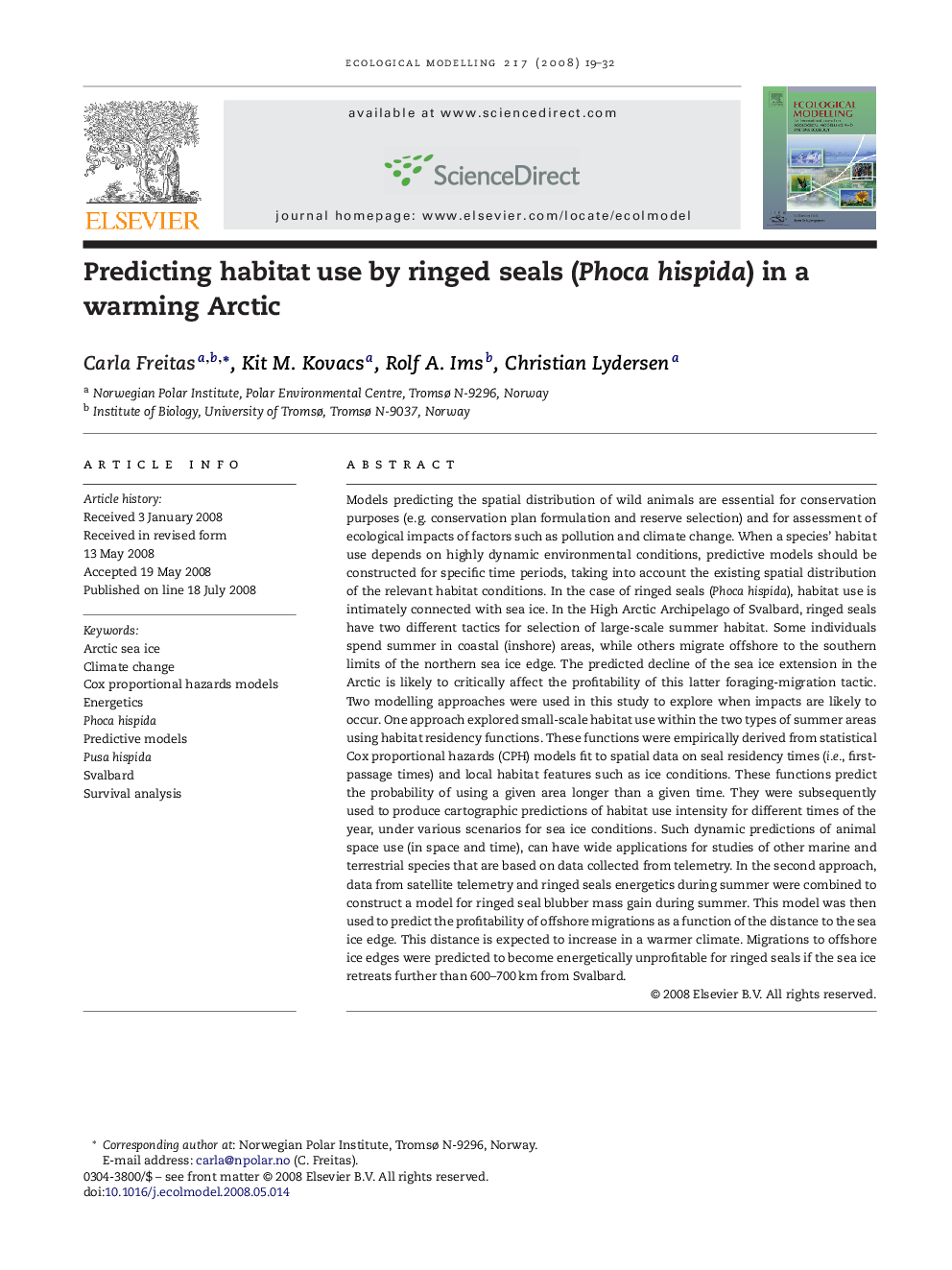| کد مقاله | کد نشریه | سال انتشار | مقاله انگلیسی | نسخه تمام متن |
|---|---|---|---|---|
| 4377778 | 1617530 | 2008 | 14 صفحه PDF | دانلود رایگان |
عنوان انگلیسی مقاله ISI
Predicting habitat use by ringed seals (Phoca hispida) in a warming Arctic
دانلود مقاله + سفارش ترجمه
دانلود مقاله ISI انگلیسی
رایگان برای ایرانیان
کلمات کلیدی
موضوعات مرتبط
علوم زیستی و بیوفناوری
علوم کشاورزی و بیولوژیک
بوم شناسی، تکامل، رفتار و سامانه شناسی
پیش نمایش صفحه اول مقاله

چکیده انگلیسی
Models predicting the spatial distribution of wild animals are essential for conservation purposes (e.g. conservation plan formulation and reserve selection) and for assessment of ecological impacts of factors such as pollution and climate change. When a species' habitat use depends on highly dynamic environmental conditions, predictive models should be constructed for specific time periods, taking into account the existing spatial distribution of the relevant habitat conditions. In the case of ringed seals (Phoca hispida), habitat use is intimately connected with sea ice. In the High Arctic Archipelago of Svalbard, ringed seals have two different tactics for selection of large-scale summer habitat. Some individuals spend summer in coastal (inshore) areas, while others migrate offshore to the southern limits of the northern sea ice edge. The predicted decline of the sea ice extension in the Arctic is likely to critically affect the profitability of this latter foraging-migration tactic. Two modelling approaches were used in this study to explore when impacts are likely to occur. One approach explored small-scale habitat use within the two types of summer areas using habitat residency functions. These functions were empirically derived from statistical Cox proportional hazards (CPH) models fit to spatial data on seal residency times (i.e., first-passage times) and local habitat features such as ice conditions. These functions predict the probability of using a given area longer than a given time. They were subsequently used to produce cartographic predictions of habitat use intensity for different times of the year, under various scenarios for sea ice conditions. Such dynamic predictions of animal space use (in space and time), can have wide applications for studies of other marine and terrestrial species that are based on data collected from telemetry. In the second approach, data from satellite telemetry and ringed seals energetics during summer were combined to construct a model for ringed seal blubber mass gain during summer. This model was then used to predict the profitability of offshore migrations as a function of the distance to the sea ice edge. This distance is expected to increase in a warmer climate. Migrations to offshore ice edges were predicted to become energetically unprofitable for ringed seals if the sea ice retreats further than 600-700Â km from Svalbard.
ناشر
Database: Elsevier - ScienceDirect (ساینس دایرکت)
Journal: Ecological Modelling - Volume 217, Issues 1â2, 24 September 2008, Pages 19-32
Journal: Ecological Modelling - Volume 217, Issues 1â2, 24 September 2008, Pages 19-32
نویسندگان
Carla Freitas, Kit M. Kovacs, Rolf A. Ims, Christian Lydersen,